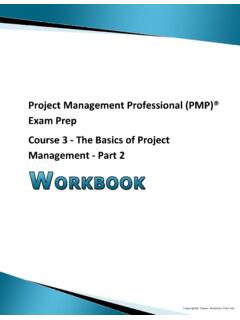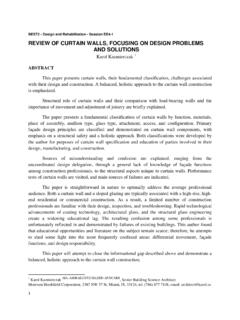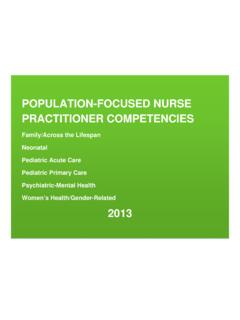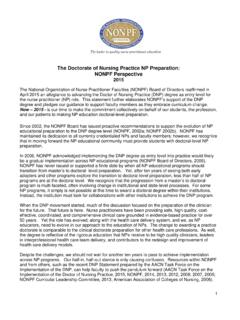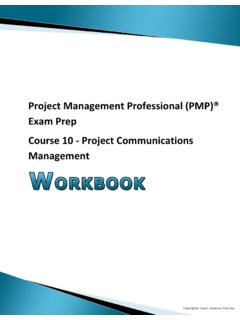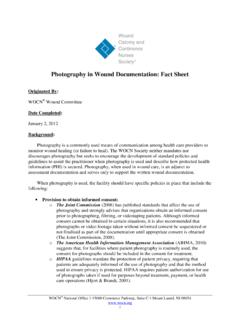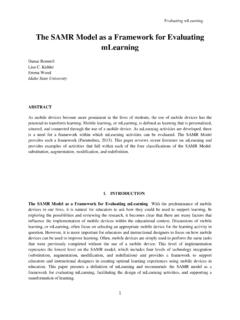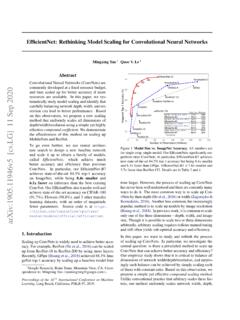Transcription of Data Management Maturity Model Introduction
1 data Management Maturity ModelIntroductionUniversity of OttawaDecember 12, 2014 SMDMM Model , CMM Integration, SCAMPI, SCAMPI Lead Appraiser, TSP, and IDEAL are service marks of Carnegie Mellon University. CMMI, Capability Maturity Model , Capability Maturity Modeling, CMM, DMM, and Carnegie Mellon are registered in the US Patent and Trademark Office by Carnegie Mellon University. For more information on CMU/SEI Trademark use, please MeccaProgram Director, DM Products & ServicesCMMI Institute Development lead and primary author, data Management Maturity (DMM)SMModel Led creation of DMM Assessment method Leading development of DMM Training and Certification courses 30+ years data Management / data architecture 7 years Enterprise Architecture (FEA) Program design and implementation EDM Expert (EDME).
2 2 Presentation Objectives Introduction to the Model Model drivers, themes, concepts and structure How an organization s program is evaluated Complementarity with bodies of knowledge and standards Use cases for the DMM. Introduction to the supporting infrastructure Training Certifications DMM Partners / DMM Introduction to the DMM What is it -why did we develop it Why our industry needs it What is its structure and approach DMM in Action DMM Assessments Use Cases How the DMM is Supported Adoption / Case Studies Training Certifications Partner Program Industry Alliances data Management Maturity ModelHistory, Description, Structure5 CMMI Worldwide Process ImprovementCMMI Quick Stats.
3 Over 10,000 organizations 94 Countries 12 National governments 10 languages 500 Partners 1500+ Appraisals in 20136 data Management Maturity (DMM)SMModelThe DMM was released on August 7, 2014 years in development 4 sponsoring organizations 50+ contributing authors 70+ peer reviewers 80+ organizations involved 300+ practice statements 300+ work products7 DMM -Guided Navigation to Lasting Solutions Reference Model frameworkof fundamental data Management capabilities Measurement instrumentfor organizations to evaluate capability Maturity , identify gaps, and incorporate guidelines for improvements Developed by CMMI Institutewith our corporate sponsors -Booz Allen Hamilton, Lockheed Martin, Microsoft Corporation.
4 And Kingland Systems Structured, crafted, and refinedto leverage the strengths and proven approach of CMMI, with the contribution of many subject matter experts Pioneering Organizations DMM Assessments: Microsoft; Fannie Mae; Federal Reserve System Statistics; Ontario Teachers Pension Plan; Freddie Mac; Securities and Exchange Commission; Treasury Officeof Financial Research8 Who Wrote It and Why Author team and peer review team represent multiple industries -deep experience in designing and implementing data Management programs and solutions Industry skills include: EDW, MDM, DQ, BI, SOA, governance, big data , enterprise architecture, data architecture, business and data strategy, platform implementation, business process engineering, business rules, software engineering, appraisals and benchmarking, DMBoK, DRM, etc.
5 Consortium approach tested and proven approaches Broad practical wisdom -What works Extensive discussions, implementation testing, and rigorous reviews resulting in consensus We wrote it for ourselves and for You all organizations To quickly and accurately measure where we are To accelerate the journey forward with a clear path and milestones9 DMM Drivers An effective data Management program requires a planned strategic effort Integrate multi-discipline efforts Inculcate a shared vision and understanding data is a thing vital infrastructure element foundation of the n-tier architecture Not a project, more than a program a lifestyle.
6 Organizations needed a comprehensive reference Model to evaluate data Management capabilities and measure improvements benchmark and guidance DMM targeted to unify understanding and priorities of lines of business, IT, and data Management per se. Aimed at the biggest challenges: Achieving an organization-wide perspective Clearly communicating to the business Aligning of business with IT/DM Sustaining a multi-year Architecture and technology neutral applicable to legacy,DW, SOA, unstructured data environments, mainframe-to-Hadoop, etc. Industry independent usable by every organization with data assets, applicableto every industry Emphasis on current state organization is assessed on the implemented data layer and existing DM processes Foundationfor collaborative and sustained process improvement for the life of the DM program [aka, forever].
7 If you manage data , the DMM is for you11 Foundation for advanced solutionsYou can accomplish Advanced data Solutions without proficiency in Basic data Management Practices, but solutions will: Take longer Cost more Non-extensible Deliver less Present greater risk11 Copyright 2013 by data Blueprint Fundamental data Management PracticesAdvanced data Solutions MDM Analytics Big data IOT Warehousing SOA11 data Management FunctionData Management StrategyData GovernanceData Quality ProgramData IntegrationMetadata Management12 DMM at a Glance13 You Are What You DO Model emphasizes behavior Creating effective, repeatable processes Leveraging and extending across the organization Activities result in work products Processes, standards, guidelines, templates, policies, etc.
8 Reuse and extension = maximum value, lower costs, happier staff Process Areas were designed to stand alone for evaluation Reflects real-world organizations Simplifies the data Management landscape for all parties Flexible for multiple purposes Because everything is connected, relationships are indicated14 DMMC apability LevelsPerformedManagedDefinedMeasuredOpt imizedLevel1 Level 2 Level3 Level4 Level5 RiskQualityAd hocReuse15 Capability and Maturity Level DefinitionsLevelDescriptionPerspective1: PerformedProcesses are performed ad hoc, primarily at the project level. There are no processes areas applied across business areas.
9 Process discipline is primarily reactive; for example, for data quality, the emphasis is on data repair. Foundational improvements may exist, but improvements are not yet extended within the organization or is managed as a requirement for the implementation of projects2: ManagedProcesses are planned and executed in accordance with policy; employ skilled people having adequate resources to produce controlled outputs; involve relevant stakeholders; are monitored, controlled, and reviewed; and are evaluated for adherence to its process awareness of the importance of managing data as a critical infrastructure : DefinedSets of standard processes have been established and improved over time, providing a predictable measure of consistency.
10 Processes to meet specific needs are tailored from the set of standard processes according to the organization s is treated at the organizationallevel as critical for successful mission : MeasuredManaged and measured process metrics have been established. There are formal processes for managing variances. Quality and process performance is understood in statistical terms and is managed across the life of the is treated as a source of competitive : OptimizedProcess performance is continually improved through both incremental and innovative improvements. Feedback is used to drive process enhancements and business practices are shared with peers and is seen as critical for survival in a dynamic and competitive Benchmark to Date17 What the DMM is Not Not a compendium of all data Management knowledge Does not address every topic and sub-topic focus on business decisions 35+ years of evolution Foundational thinkers & Talented vendors Wealth of collective experience Fully mature industry practices.
